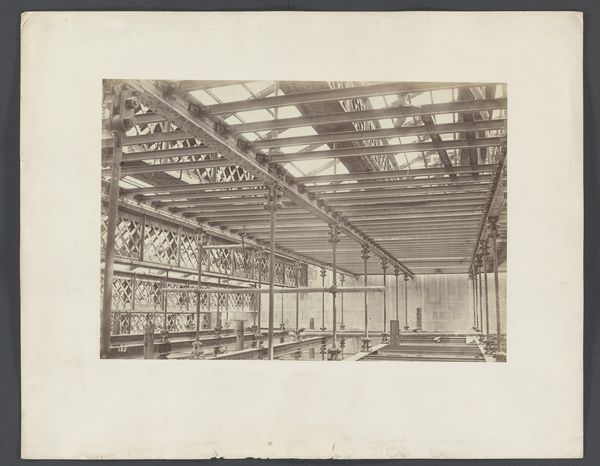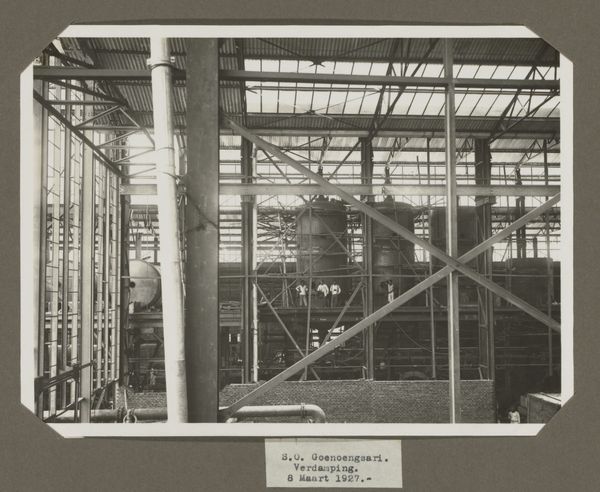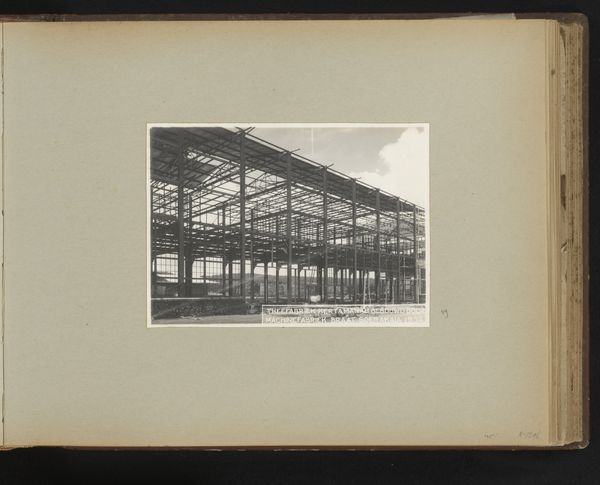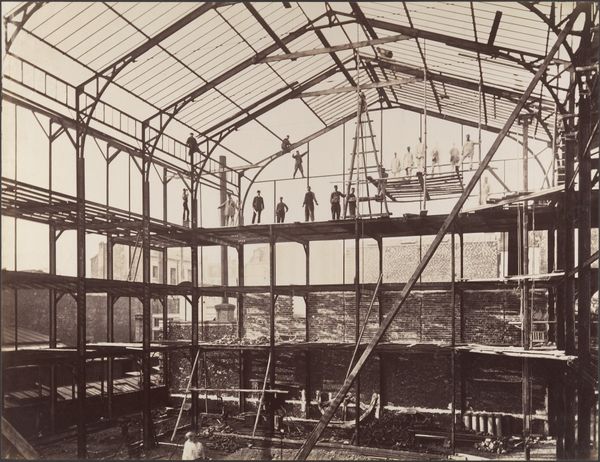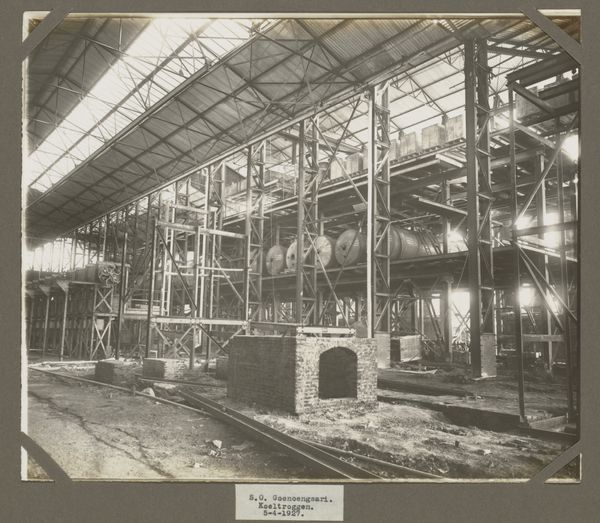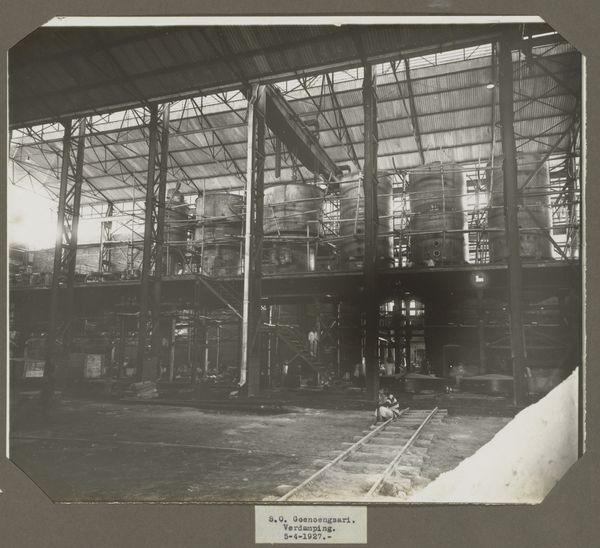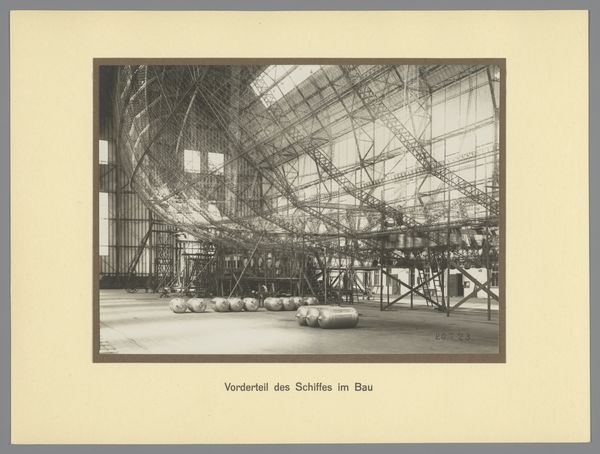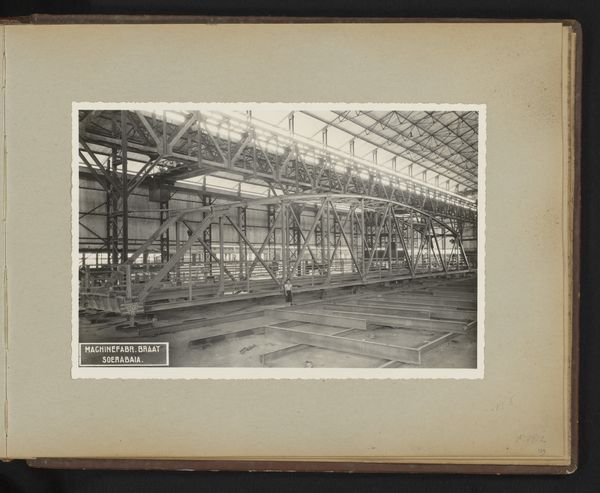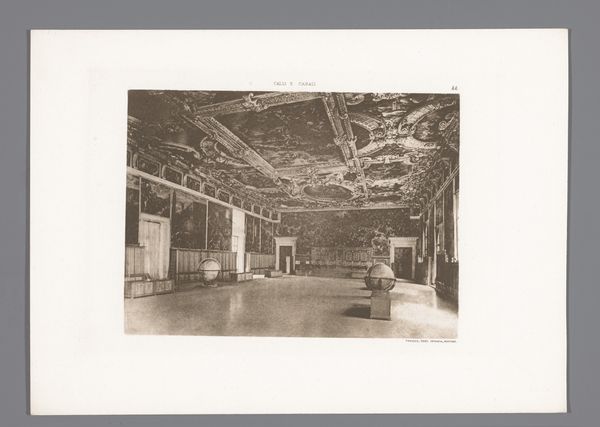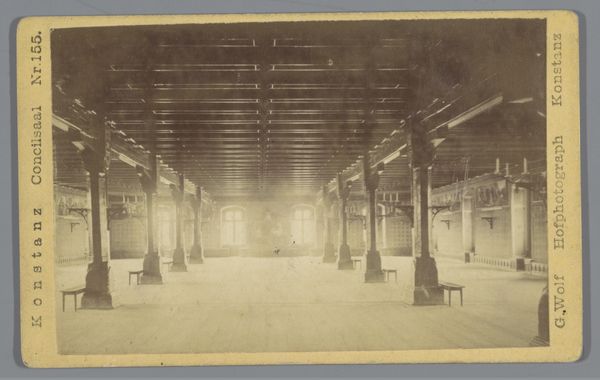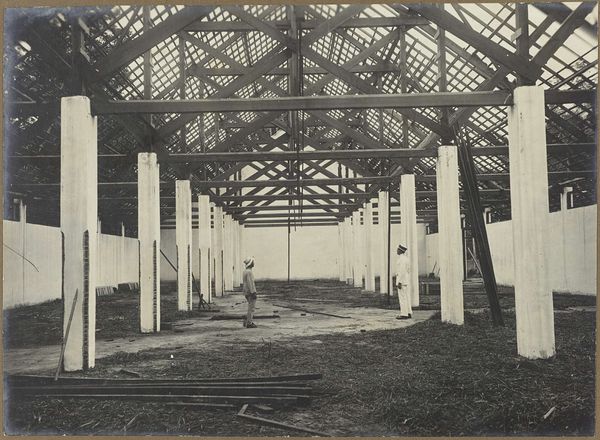
Dimensions: Image: 30.2 x 40.1 cm (11 7/8 x 15 13/16 in.)
Copyright: Public Domain
Curator: Looking at this gelatin-silver print from 1852, Benjamin Brecknell Turner captures the interior of the Crystal Palace Transept, in Hyde Park. Editor: The striking contrasts immediately create a contemplative, almost ghostly, mood. It feels suspended in time, a stark geometry softened by that incredible tree. Curator: Absolutely. Considering the time, this work demonstrates remarkable technical prowess. The process alone – coating the paper, exposing and developing it—reflects the rapidly evolving intersection of science and art in the Victorian era. The Crystal Palace, built for the Great Exhibition, was itself a testament to industrial production and global trade. Editor: Yes, but let’s not overlook the visual grammar here. Note how the linear perspective and strong horizontal lines of the floor and mezzanine draw the eye into the composition, leading it to the organic form of the tree, a stunning focal point set against the grid of iron and glass. The stark contrast also serves to underscore that nature-versus-machine dialectic so present during this era of modernization. Curator: Indeed. And that's key—the presence of the tree underscores the ambitious scale and novelty of the building itself; the structure was literally built *around* these existing elms. The image reveals the tension inherent in this new industrial age: the attempt to dominate and control nature, yet the simultaneous romanticizing of it. Turner's choice to frame the image this way can be understood as a reflection on Britain’s global ambition and its impact on the land, its resources, and its people. Editor: But that tension creates its own sublime harmony. Through the carefully organized shapes, lines and the tonality that defines form in space, one grasps a visual reconciliation that soothes the modern anxieties surrounding industrial advancement, it's not mere documentarian observation; Turner orchestrates what amounts to an expression of philosophical resolution. Curator: The image asks questions more than answers them, ultimately. Reflecting on it today we might consider the labor and raw materials—the glass, the iron, even the photographic chemicals—that made this scene possible. Editor: In that resolution one almost reconciles oneself, too. Curator: It's an artifact of ambition. Editor: Precisely: sublime in its artfulness, resolved.
Comments
No comments
Be the first to comment and join the conversation on the ultimate creative platform.

